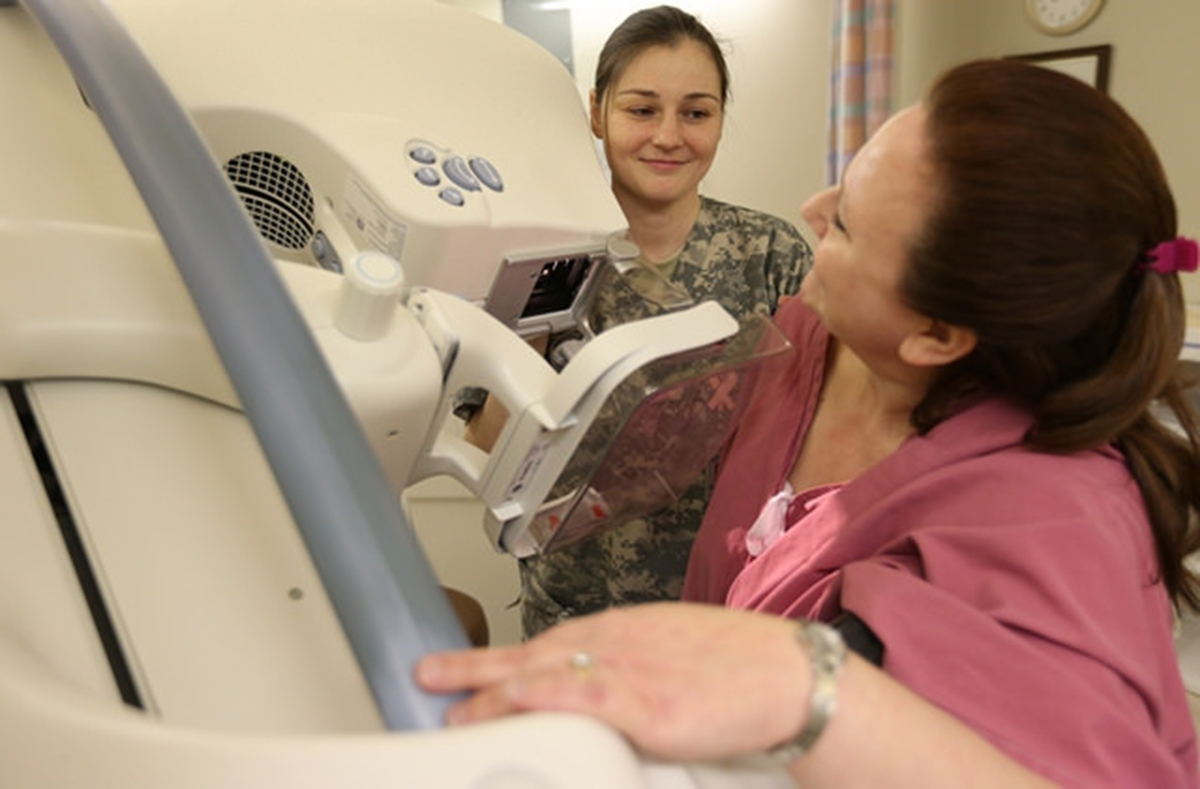Mammogram is a routinely employed tool for early detection of breast cancer in women. Easy availability, feasibility of use, efficacy and low cost are what make mammogram an ideal technique for timely diagnosis of breast cancer. The uses of mammogram are not, however, restricted to breast cancer identification alone. Among the recently unearthed functions of mammography is screening of heart diseases in women.
Although the prevalence rates of heart diseases among women are changing rapidly, heart problems remain one of the late onset diseases in women. This is mainly because of the protective role of estrogen (the female hormone) in women. The decline in the levels of this hormone with age increases the risk of developing heart diseases, particularly after menopause.

The efficacy of mammography is highest in middle aged women, especially those over the age of 35. Helped along by the fact that heart diseases develop late in women, mammography has emerged as one of the most important diagnostic investigation for heart diseases in women.
How Does Mammography Detect Heart Diseases?
A recent study carried out by Harvey Hecht, M.D., professor at the Icahn School of Medicine and director of cardiovascular imaging at Mount Sinai St. Luke's hospital and his team, discovered a close relationship between the level of calcium deposits in the blood vessels that supply the breast and the deposits in coronary arteries, the vessels that supply the heart. The research included 292 women who had digital mammography and non-contrast CT scans done within one year.
Termed as Coronary arterial calcification, or CAC, the deposition of calcium salts is in the coronary vessels is as dangerous a risk factor for heart diseases as high cholesterol levels, uncontrolled diabetes and high blood pressure. According to the study, due to close anatomical association between the vasculature of breast and coronary arteries, the presence of calcium deposits in breast arteries strongly indicates the calcification of coronary arteries as well.
Statistical data also strongly favors the beneficial role of mammogram. The study showed 70% of the women found to have breast arterial calcification on mammography to have CAC when tested by non-contrast CT scan. Among the women under the age of 60 who were found to have CAC, half were found to have coexisting breast arterial calcification.
READ Tips For Breast Cancer Prevention
Since the odds of false positive on mammography are quite low, the study showed that if a young woman was found to have calcification in breast vasculature, there was an 83% chance that she also had CAC. Breast arterial calcification has now become as strong a predictor, if not better, as Framingham Risk Score for heart diseases in women. Framingham Risk Score is rather thought to overestimate this risk.
The Future Prospects
Being cost-effective and easily available, mammography can help trace subclinical atherosclerosis in coronary arteries by detecting breast arterial calcification. This way, additional testing for the confirmation of heart diseases can be initiated in time.
Timely diagnosis can also help in risk stratification by flagging the high risk patients so that prompt interventions can be employed to treat these cardiovascular problems. Preventive measures in low risk patients can help slow down the progression of the heart diseases. Mammography has, no doubt, redefined the traditional indicators of heart diseases in women.
Mammograms Benefit Half The Women In Their 40s
According to the latest research, all the women approaching their 40s should undergo mammography for the screening of breast cancer since about half of them already carry high risk factors for breast cancer which necessitate annual mammograms in these women.
The study questions the existing guidelines that recommend that women can delay having annual mammograms till the age of 45 and even 50. This study found over 50% of the women between the ages of 40 and 44 to have higher than average risk of developing breast cancer. These women were, therefore, found to be ideal candidates for annual screening.

40s: the new milestone for annual mammograms
This research was carried out by Dr. Jennifer Plichta, breast surgery fellow at Massachusetts General Hospital and Brigham and Women's Hospital in Boston and her fellow researchers. The aim of the study was to review the guidelines published by the cancer society in 2015 which stipulated that women could delay receiving annual mammograms till the age of 45.
American Cancer Society (ACS) recommends women to start having annual mammograms at the age of 45. The American Society of Breast Surgeons (ASBS) has laid down additional guidelines which advise that
- Women should start mammograms earlier than 45 if they have a calculated lifetime risk greater than 15 percent.
- Women with a 20 percent or greater lifetime risk of breast cancer also should undergo screening MRIs.
- Women with a 5 percent or greater risk of a breast cancer-related genetic mutation should receive genetic testing.
The research involved more than 900 women, none of whom had been diagnosed with breast cancer previously. They were all studied as new patients at the Massachusetts General Hospital breast clinic between March 2011 and October 2015.
The study revealed that 50% of these women fulfilled the criteria for annual mammography set by the ACS and the ASBS. 39 percent of these women met the ACS criteria for above-average risk for breast cancer. 11 percent of the study subjects met the criteria of the American Society of Breast Surgeons.
READ Sexual Intimacy And Breast Cancer Survivors
The study went on to study the percentage of women who fulfilled the standards for additional testing by Magnetic Resonance Imaging (MRI) and genetic testing once screened by mammogram. It was found that 32 percent of the women met the eligibility standards for regular screening MRI and 25 percent were eligible for genetic testing, as recommended by ACS and ASBS.
The Future Prospects
"We believe formal risk assessment is essential for women aged 40 to 44 in order to identify those who require screening mammography to start at the age of 40, and those who would qualify for screening MRIs and genetic testing," said Plichta, the lead researcher.
This study puts a new perspective on the recommendations for annual screening mammograms since breast cancer screening is not a part of the routine workup in women of this age group. This research is expected to have far reaching implications in terms of expanding the efforts and resources for risk assessment of breast cancer in women in their 40s.
- Photo courtesy of http://images.wisegeek.com/technician-looking-at-mammography-on-screens.jpg
- Photo courtesy of armymedicine: www.flickr.com/photos/armymedicine/14917131905/
- Photo courtesy of armymedicine: www.flickr.com/photos/armymedicine/14917131905/
- Photo courtesy of ileohidalgo: www.flickr.com/photos/ileohidalgo/9537325628/


Your thoughts on this